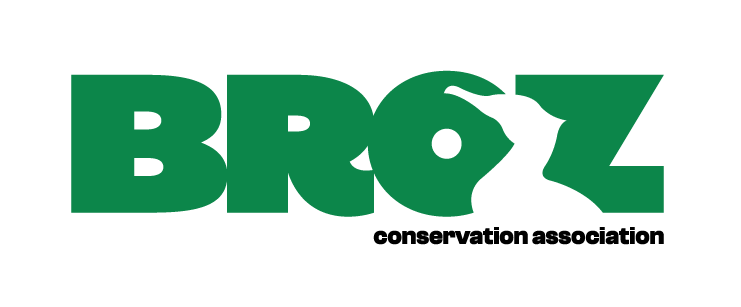Although its Slovak name evokes a close relationship to blackthorn, the eastern eggar females lay eggs primarily on hawthorns.
This butterfly is one of the few that lays its eggs in the fall and they spend the whole winter on the shrub. Therefore, the female wraps them in a cover that has hairs on it, ensuring that they stay protected from water, frost and other weather conditions. The female seeks out very low hawthorn bushes to lay her eggs because, later, when the caterpillars hatch in the early spring months, this cover needs to be as close to the ground as possible so that the caterpillars can absorb as much of the ground heat from the first rays of spring as possible. If temperature conditions change, they can quickly return to their cover where they generate heat together to ensure the survival of as many caterpillars as possible.The caterpillars feed on young, emerging hawthorn leaves and, when they are older, on the leaves of blackthorn.
Eriogaster catax is a rare and local butterfly species of our fauna. It is a protected species of European importance. It is found only in warmer areas from lowlands to mid-montane areas. Its occurrence is linked to the mesas and grasslands in the early stages of succession. Its females seek out young low hawthorn and blackthorn bushes growing in sparse, unconnected vegetation to lay their eggs. In the past, this condition was commonly and reliably maintained by free grazing of animals and the preparation of leaf litter, which was part of the animals’ winter forage. The disappearance of free grazing has resulted in the overgrowth of sites associated with overgrowth of shrubs and the thickening to encroachment of their undergrowth. The sites are thus gradually becoming unsuitable for the occurrence of the butterfly and the butterfly is becoming extinct. It is not able to make longer flights to more distant sites. The females of this moth are not good fliers, it’s not easy for them to fly so they only fly over very short distances. This means that if conditions deteriorate, they do not have a good ability to find and colonise a more distant location where the conditions for the development of their caterpillars may still be suitable.
Therefore, in order to properly manage the sites of this rare butterfly, we monitor the abundance of its caterpillars’ nests. A decrease in the abundance of nests with caterpillars is a sign that the conditions in the site are becoming less favourable for the eastern eggar.
In such a case, management intervention is needed to restore the age and spatial structure of the hawthorn and blackthorn stands.
The eastern eggar occurs in 2 sites of our LIFE Metamorphosis project, where the mapping was carried out – in the area of European importance Holubyho Kopanice, in Beckovské skalice and on one of the stepping stones, which we are planning as part of the project – Skalka pri Hubine.









